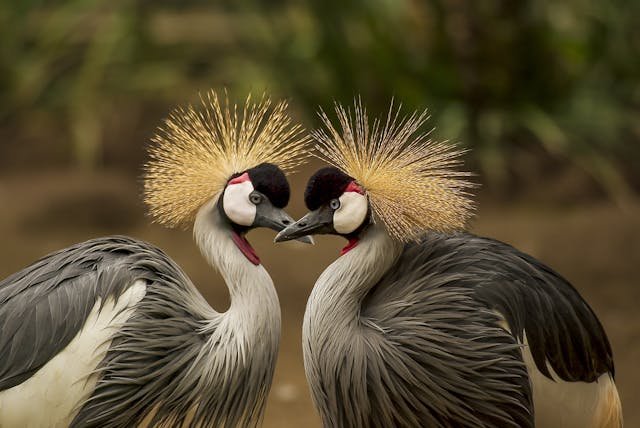India, a land of incredible biodiversity, is home to majestic tigers, rare rhinos, and countless other unique species. However, this natural wealth faces significant threats from habitat destruction, poaching, and climate change. To combat these challenges, various wildlife conservation efforts in India are working tirelessly to protect the nation’s flora and fauna.
This article highlights 10 impactful wildlife conservation projects currently underway in India. These initiatives are pivotal in safeguarding the country’s natural heritage, ensuring that future generations can continue to marvel at its diverse ecosystems. From protecting endangered species to restoring habitats, these projects demonstrate India’s commitment to wildlife conservation and preserving its ecological balance.

List Of Impactful 10 Wildlife Conservation Projects in India
1. Project Tiger
- Initiated: 1973
- Objective: Protect Bengal tigers and their habitats to counter threats like poaching and habitat loss.
- Key Areas: Spanning 53 tiger reserves across the country, including Corbett, Kanha, and Bandipur National Parks.
- Impact: Managed under the National Tiger Conservation Authority (NTCA), this program has led to a remarkable recovery in tiger populations, making India home to 70% of the world’s tigers.
2. Project Elephant
- Initiated: 1992
- Objective: Safeguard elephants, their habitats, and migratory routes while reducing human-elephant conflict.
- Key Areas: Active across elephant reserves in states like Karnataka, Assam, and Kerala.
- Focus: Emphasizing veterinary care, research, and community education to ensure long-term survival and coexistence with humans.
3. Gir Lion Project
- Initiated: 1972
- Objective: Protect and preserve the Asiatic lion population in Gujarat’s Gir Forest, the last refuge of this majestic species.
- Impact: From near extinction, the Asiatic lion population has steadily increased, with significant habitat conservation and anti-poaching measures ensuring their survival.
4. Crocodile Conservation Project
- Initiated: 1975
- Objective: Focused on conserving India’s three crocodilian species: the gharial, mugger, and saltwater crocodile.
- Key Areas: Sanctuaries like the Chambal River Sanctuary and Odisha’s Bhitarkanika National Park.
- Impact: Breeding programs under Project Crocodile in India have successfully revived populations, with key efforts directed at habitat protection and community involvement.
5. Project Snow Leopard
- Initiated: 2009
- Objective: Ensure the survival of snow leopards and protect their high-altitude ecosystems.
- Key Areas: Conservation efforts span across Jammu & Kashmir, Himachal Pradesh, Uttarakhand, Arunachal Pradesh, and Sikkim.
- Focus: Collaborative strategies involving local communities for sustainable conservation while addressing threats like habitat degradation and poaching.
6. Indian Rhino Vision 2020
- Initiated: 2005
- Objective: To boost the population of the one-horned rhinoceros in Assam and expand their range to other states.
- Key Areas: Kaziranga National Park, Pobitora Wildlife Sanctuary, and Manas National Park.
- Impact: Through translocation and habitat improvement, this wildlife project has significantly increased rhino numbers in their natural habitats.
7. Project Hangul
- Initiated: 1970s
- Objective: Conserve the Kashmir stag (Hangul), an endangered species found only in Jammu & Kashmir.
- Key Areas: Dachigam National Park and nearby forests.
- Focus: Efforts include habitat protection, reducing human-wildlife conflict, and involving local communities to help save wild animals like the Hangul.
8. Olive Ridley Turtle Conservation Project
- Initiated: Ongoing
- Objective: Protect nesting and hatching grounds for Olive Ridley turtles, one of the most iconic species in the natural wildlife of India.
- Key Areas: Odisha’s Gahirmatha Beach and Rushikulya rookery, major nesting sites for these turtles.
- Impact: Conservation efforts have safeguarded one of the largest turtle nesting grounds globally, ensuring the survival of this vulnerable species.
9. Vulture Conservation Project
- Initiated: 2004
- Objective: Rescue critically endangered vulture species from extinction caused by the harmful veterinary drug Diclofenac.
- Key Areas: Haryana, West Bengal, Assam, and Madhya Pradesh.
- Focus: Environmental conservation projects like captive breeding programs and public awareness campaigns have helped stabilize vulture populations.
10. Red Panda Conservation Project
- Initiated: 1990s
- Objective: Preserve and increase the population of the elusive red panda in northeastern India.
- Key Areas: Singalila National Park (West Bengal), Sikkim, and Arunachal Pradesh.
- Focus: Protecting habitats, promoting eco-tourism, and addressing human-animal conflict are central to this wildlife project.
These conservation efforts highlight India’s commitment to protecting its diverse flora and fauna. From the towering rhinoceros to the delicate red panda, these environmental conservation projects demonstrate the importance of preserving the natural wildlife of India and ensuring sustainable coexistence with types of wildlife conservation strategies.
The Importance of Supporting Wildlife Conservation in India
India’s rich biodiversity is a treasure trove of unique ecosystems and species, from majestic tigers to gentle red pandas. However, this natural heritage faces increasing threats like habitat loss, climate change, and human-wildlife conflicts. Supporting wildlife conservation projects is essential to preserving the balance of these ecosystems and ensuring the survival of countless species.
Why Continued Support Matters
- Preserving Biodiversity: Wildlife conservation efforts protect India’s flora and fauna, ensuring ecological stability and preventing the extinction of iconic species like the Bengal tiger and the one-horned rhinoceros.
- Maintaining Ecosystem Services: Healthy wildlife populations contribute to clean air, water, pollination, and climate regulation, all critical for human well-being.
- Sustaining Livelihoods: Conservation projects often involve local communities, providing employment opportunities and sustainable income through eco-tourism.
How Individuals Can Contribute
- Donations: Financial support for wildlife conservation efforts helps fund crucial activities like habitat restoration, anti-poaching patrols, and breeding programs. Even small contributions to reputable organizations can make a big difference.
- Volunteering: Offer your time and skills to assist in conservation programs, from wildlife monitoring to community outreach. Volunteering fosters a deeper understanding of conservation challenges and directly contributes to on-the-ground efforts.
- Responsible Tourism: Choose eco-friendly travel options that support wildlife conservation projects. Opt for tours led by certified guides, respect wildlife habitats, and avoid activities that exploit animals.
- Spreading Awareness: Educate others about the importance of supporting wildlife conservation in India. Use social media, community events, or personal conversations to share information and inspire action.
Conclusion
India’s incredible biodiversity is both a treasure and a responsibility. The 10 wildlife conservation projects in India highlighted in this article showcase the tireless efforts to protect the nation’s iconic species and fragile ecosystems. From safeguarding Bengal tigers and Asiatic lions to ensuring the survival of red pandas and Olive Ridley turtles, these initiatives play a critical role in preserving India’s natural heritage.
These projects emphasize the importance of collaboration between government bodies, environmental organizations, and local communities in addressing conservation challenges. Supporting these efforts—whether through donations, volunteering, or responsible tourism—is vital for the long-term protection of India’s wildlife.
By championing wildlife conservation efforts in India, we can help secure a future where wild animals and their habitats continue to thrive, ensuring a harmonious balance between nature and humanity.

Anamika is a passionate writer for Eco365Store.com, specializing in topics that inspire a cleaner, greener world. With expertise in home cleaning, recycling, and eco-friendly solutions, she crafts engaging and informative articles that help readers adopt sustainable practices in their daily lives.
